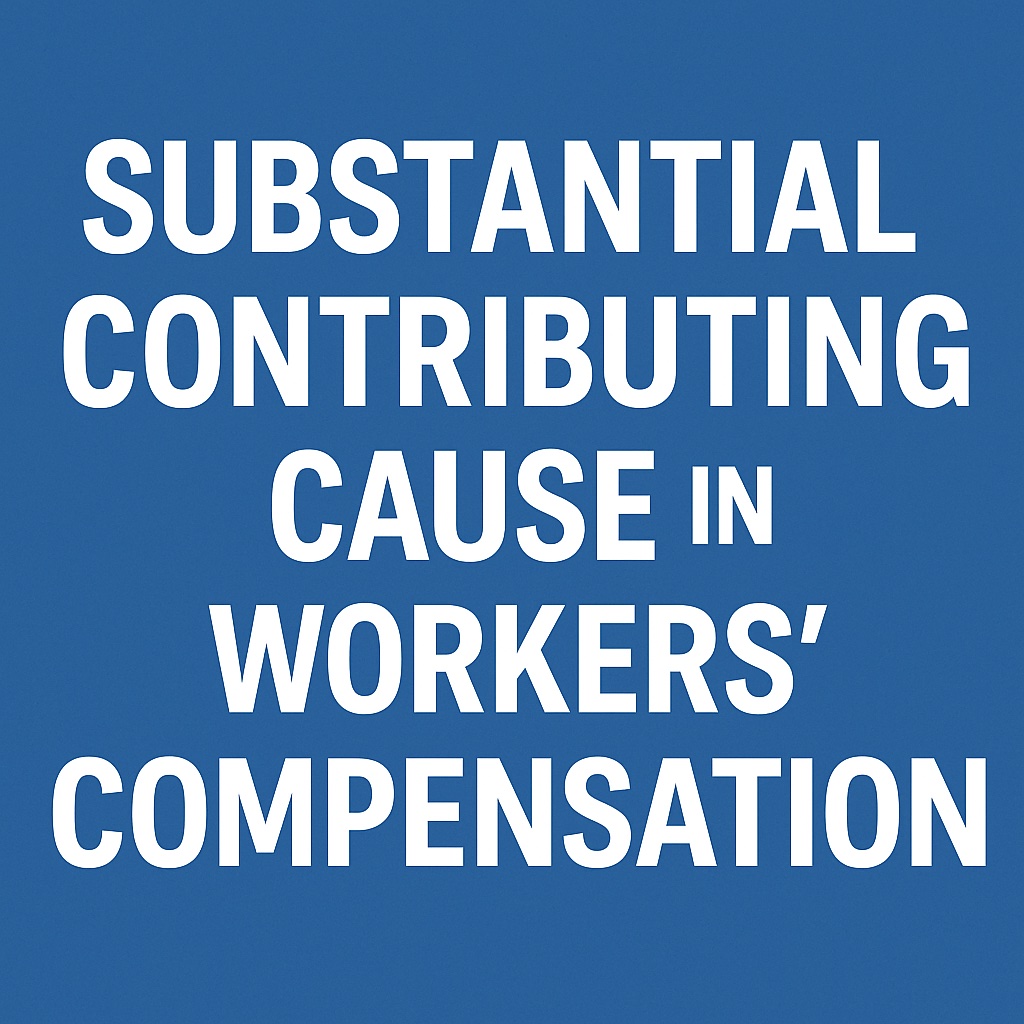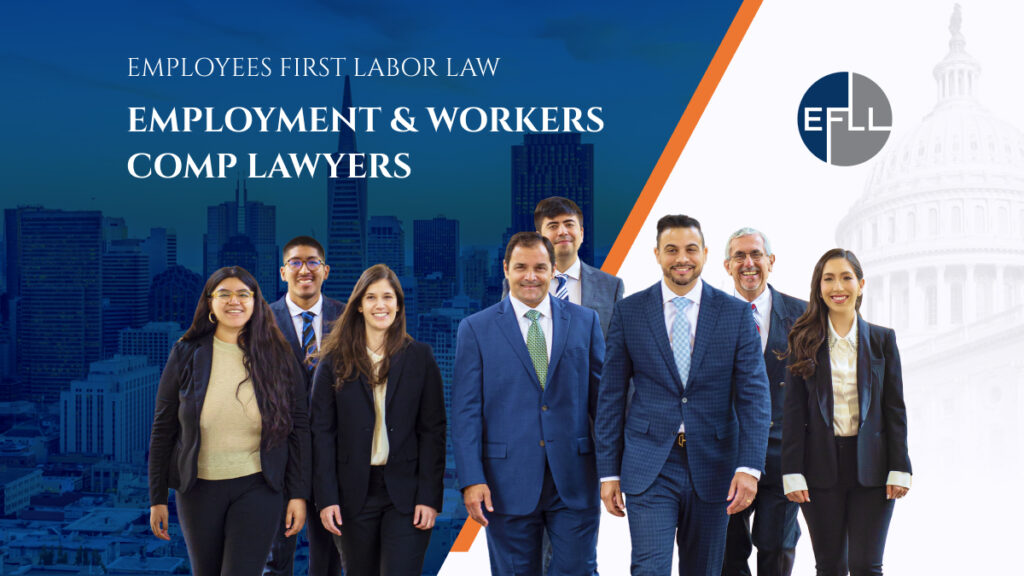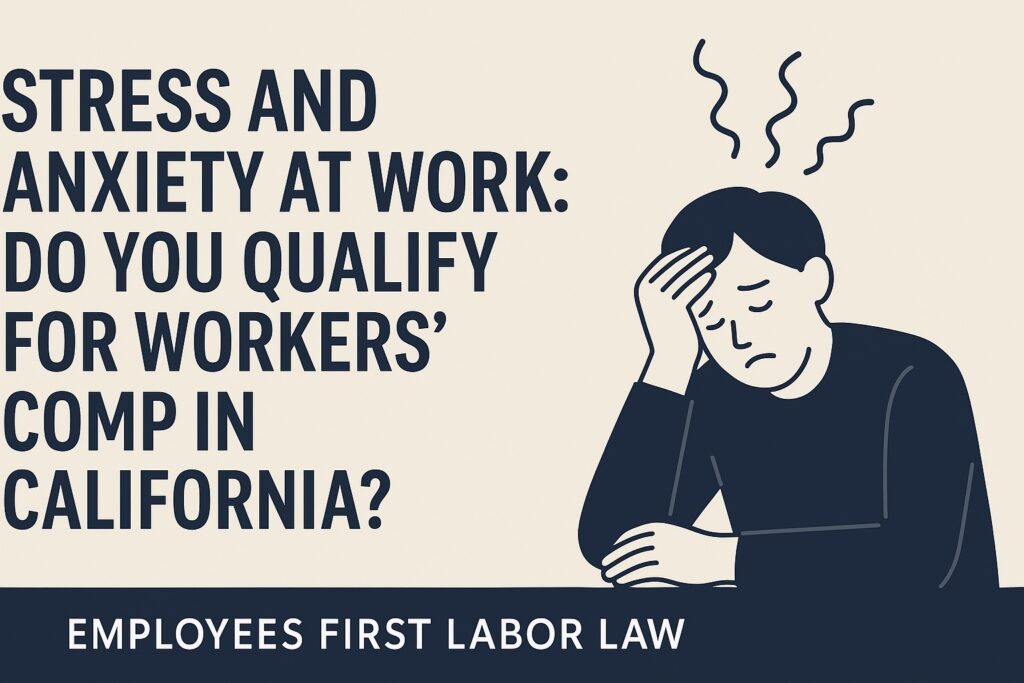
What Is a “Substantial Contributing Cause”?
In California workers’ compensation law, proving that your injury is work-related doesn’t require showing that your job was the only cause—but rather that it was a substantial contributing cause. This legal standard determines whether your injury, illness, or condition is compensable.
According to California Labor Code §3208.3 and case law, a work injury is compensable if the employment contributed to the injury in more than a minimal or trivial way—even if there were other personal, non-work-related contributing factors.
At Employees First Labor Law (EFLL), we use this standard to fight back against insurance companies that try to deny legitimate claims by blaming pre-existing conditions, age, or unrelated health issues.
Why This Standard Matters
The Substantial Contributing Cause standard is often the central issue in denied claims—especially when the injury involves:
- Cumulative trauma (CT)
- Occupational diseases (e.g., carpal tunnel, hearing loss, lung conditions)
- Aggravation of pre-existing injuries
- Psychological injuries
- Heart attacks and strokes
- Spinal degeneration and arthritis
In these cases, insurers often argue that the injury was caused by aging, obesity, diabetes, or prior injuries—not work. But if your job contributed significantly to the development or worsening of the condition, you may still have a valid claim.
Legal Definition: Substantial Contributing Cause
Under California law, a “substantial contributing cause” means:
A cause that is not insignificant, trivial, or remote. It must be more than a minimal factor, but it does not need to be the predominant or sole cause.
This standard applies to both specific injuries (e.g., a fall at work) and cumulative trauma injuries (e.g., repetitive stress over months or years).
Example Cases Where This Standard Applies
1. Cumulative Trauma
Example: A factory worker develops chronic back pain after 15 years of lifting and standing.
Defense Argument: “It’s just aging.”
Legal Response: If the job accelerated or aggravated the condition, it’s compensable.
2. Pre-Existing Condition
Example: A data entry worker with prior mild carpal tunnel develops severe symptoms after long hours typing.
Defense Argument: “It’s a pre-existing condition.”
Legal Response: If work contributed substantially to the worsening, the claim is valid.
3. Heart Attack
Example: A delivery driver has a heart attack while unloading heavy packages.
Defense Argument: “It’s due to lifestyle, not work.”
Legal Response: If the exertion or stress at work was a substantial factor, the injury is compensable under the Labor Code §3212 standard.
The Role of Medical Evidence
To prove substantial contribution, your attorney will often rely on:
- Reports from your Primary Treating Physician (PTP)
- Medical-Legal Evaluations by a QME or AME
- Testimony from medical experts
- Analysis of workplace duties, timelines, and symptom progression
Doctors must provide an opinion “within reasonable medical probability” that your work activities were a substantial contributing cause. Without clear documentation using this language, insurers will deny the claim.
At EFLL, we work closely with physicians to make sure their reports support your case in legally appropriate terms.
Common Defense Tactics to Watch For
- Claiming the injury is “degenerative” or “age-related”
- Pointing to non-industrial risk factors like obesity, smoking, or genetics
- Arguing the injury is “idiopathic” (not caused by any external factor)
- Asserting that off-duty activities are the true cause
All of these arguments can be overcome if your work materially contributed to the injury—even in combination with non-work causes.
What About Psychiatric Injuries?
For psychiatric claims, the threshold is slightly higher. Under Labor Code §3208.3(b)(1), the injured worker must prove that work stress or trauma was the predominant cause (51% or more) of the mental health condition.
However, this does not apply to physical injuries with secondary psychological effects—those are still judged under the “substantial contributing cause” standard.
How EFLL Proves Substantial Contribution
At Employees First Labor Law, we:
- Collect detailed work history and injury timelines
- Coordinate with treating doctors and QMEs to ensure their opinions meet legal standards
- Fight improper denials at Utilization Review (UR) and Independent Medical Review (IMR)
- Use discovery, depositions, and expert witnesses to document job duties and workplace risk factors
- Pursue trial and appeal if insurers refuse to apply the correct standard
We’ve won countless cases where insurers denied claims based on degenerative conditions, prior injuries, or non-work-related medical history—because we proved that work played a significant role.
Final Thoughts
You don’t have to prove that your job was the only cause of your injury—only that it was a substantial contributing cause. Don’t let the insurance company tell you your pain is “just aging” or “not their fault.”
If your injury was made worse by your job, you may be entitled to full workers’ compensation benefits—including medical care, lost wages, permanent disability, and future treatment.
Employees First Labor Law is here to make sure your case is heard, supported by medical-legal evidence, and fought for with the urgency it deserves.




